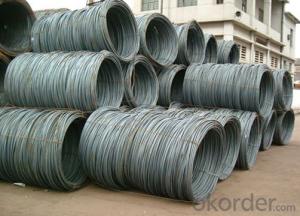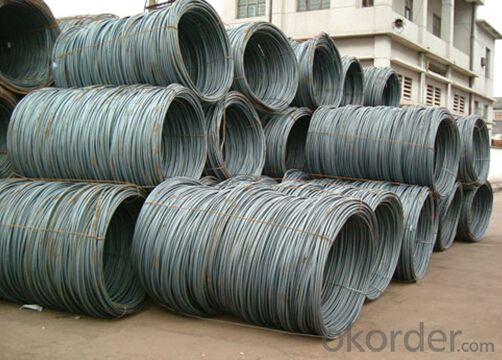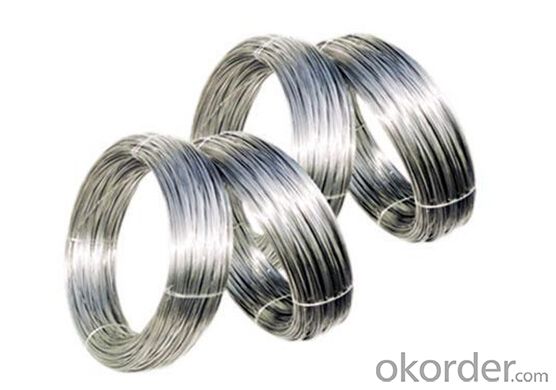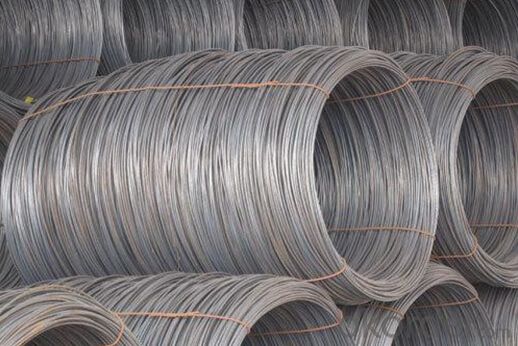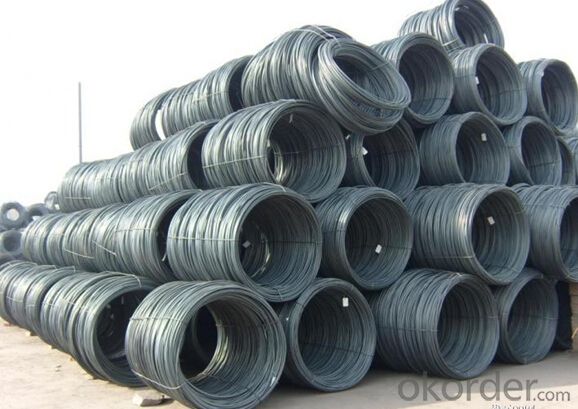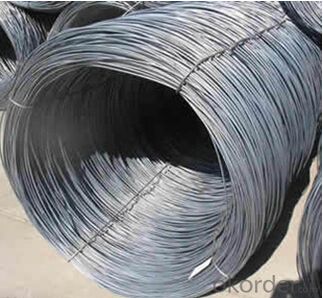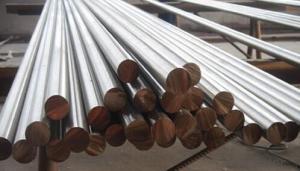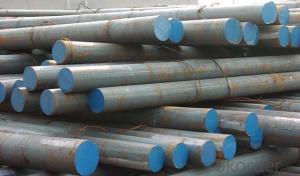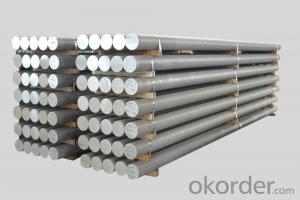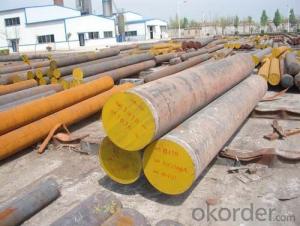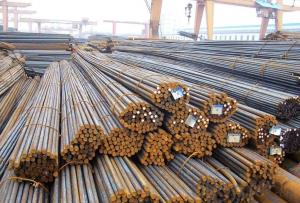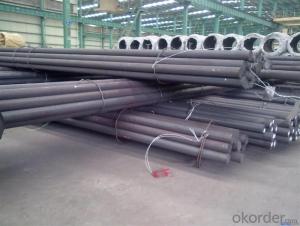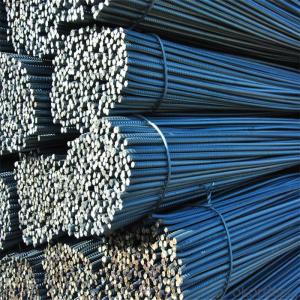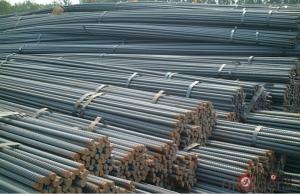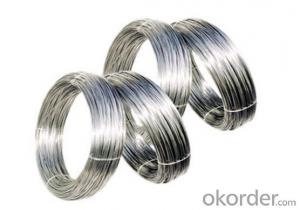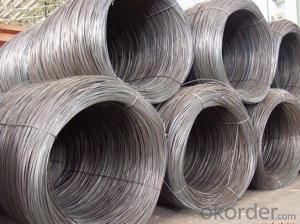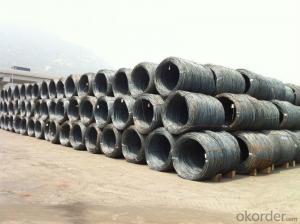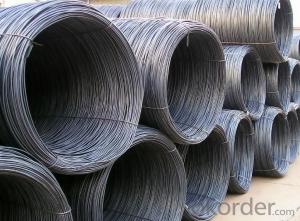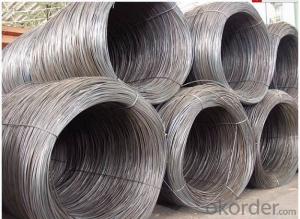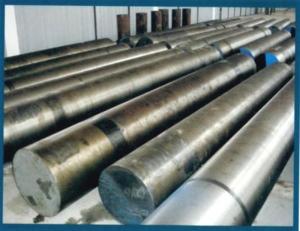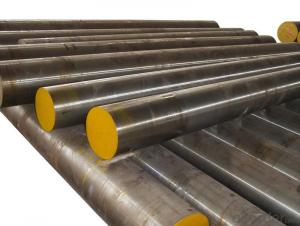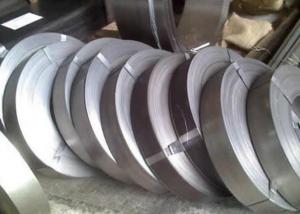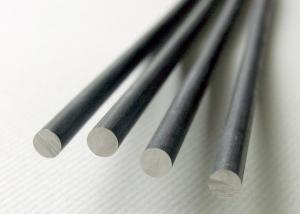Dia.5.5mm SAE1008B Steel Wire Rod with High Quantity
- Loading Port:
- Tianjin
- Payment Terms:
- TT OR LC
- Min Order Qty:
- 10 m.t.
- Supply Capability:
- 10000 m.t./month
OKorder Service Pledge
OKorder Financial Service
You Might Also Like
Specification
Dia.5.5mm SAE1008B Steel Wire Rod with High Quantity
Details of the Dia.5.5mm SAE1008B Steel Wire Rod with High Quantity
| Steel Grade | Q195-Q235,Q235,SAE 1008-1018 Hot Rolled Steel Wire Rod |
| Diameter | 5.5, 6.5, 7,8, 9,10, 12,14mm.etc. |
| Coil weight | 2m.t. |
| Application | drawing, construction materials, machinery parts,construction for Houses, Bridges, Roads,Packing |
| Deliver Time | 25-30 days after receipt of L/C or deposit by T/T |
| Packing | In coils, loading in container or by bulk vessel |
| Payment terms | 1).100% irrevocable L/C at sight. |
| 2).30% T/T prepaid and the balance against the copy of B/L. | |
| 3).30% T/T prepaid and the balance against L/C |
| Chemical Composition(%) | ||||||
| C | Mn | Si | S | P | Cr | |
| SAE1006B | 0.03~O.07 | ≤0.32 | ≤0.30 | ≤0.045 | ≤0.040 | 0.3-0.35 |
| Mechanical properties | ||||||
| Yield strength(N/mm2) | Tensile strength(N/mm2) | Elongation(%) | ||||
| 250-280 | 350-380 | ≥32 | ||||
| Grade | Chemical Composition(%) | |||||
| C | Mn | Si | S | P | Cr | |
| SAE1008B | 0.10max | 0.3~O.50 | 0.15max | 0.050max | 0.040 max | 0.3-0.35 |
| Mechanical properties | ||||||
| Yield strength(N/mm2) | Tensile strength(N/mm2) | Elongation(%) | ||||
| ≥195 | 315-430 | ≥30 | ||||
Supplier of the Dia.5.5mm SAE1008B Steel Wire Rod with High Quantity
CNBM International Corporation is the most import and export platform of CNBM group(China National Building Material Group Corporation) ,which is a state-owned enterprise, ranked in 270th of Fortune Global 500 in 2015.
With its advantages, CNBM International are mainly concentrate on Cement, Glass, Iron and Steel, Ceramics industries and devotes herself for supplying high quality series of refractories as well as technical consultancies and logistics solution.
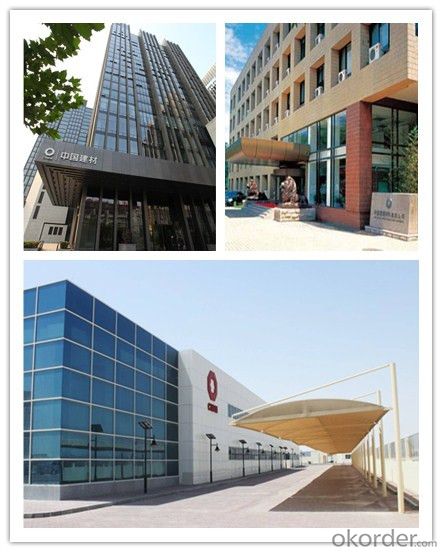
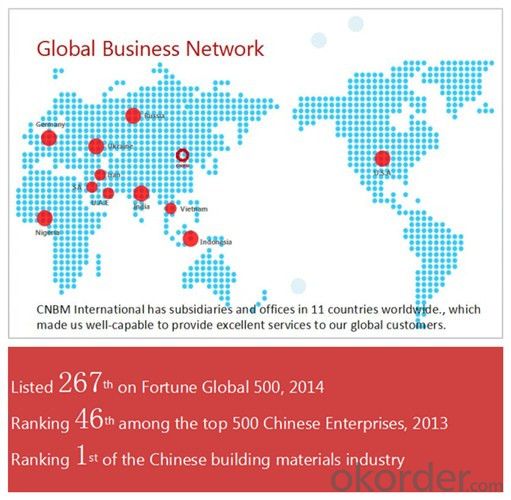
Delivery of the Dia.5.5mm SAE1008B Steel Wire Rod with High Quantity
Packaging Detail | Sea worthy packing /as per customer's packing instruction |
Delivery Detail | 15 ~ 40 days after receiving the deposit |
Products Show
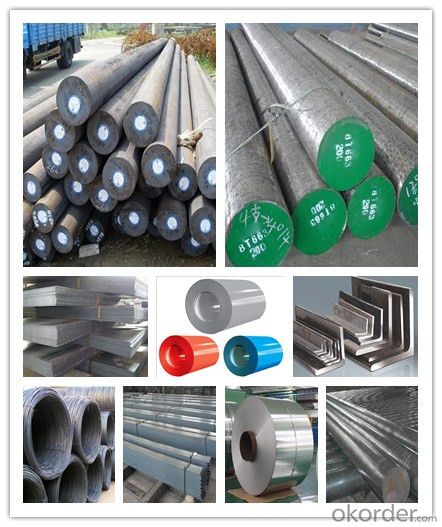
FAQ:
Are you a trading company or manufacturer? | Manufacturer |
What’s the MOQ? | 3 metric ton |
What’s your delivery time? | 15-35 days after downpayment received |
Do you Accept OEM service? | Yes |
what’s your delivery terms? | FOB/CFR/CIF |
What's the Payment Terms? | 30% as deposit,70% before shipment by T/T |
Western Union acceptable for small amount. | |
L/C acceptable for large amount. | |
Scrow ,Paybal,Alipay are also ok | |
Why choose us? | Chose happens because of quality, then price, We can give you both. Additionally, we can also offer professional products inquiry, products knowledge train (for agents), smooth goods delivery, excellent customer solution proposals. |
What's your available port of Shipment? | Main Port, China |
What’s your featured services? | Our service formula: good quality+ good price+ good service=customer's trust
|
Where are your Market? | Covering more than 160 countries in the world |
- Q: How does special steel contribute to the renewable energy equipment industry?
- Special steel plays a crucial role in the renewable energy equipment industry by providing the necessary strength, durability, and corrosion resistance required for various components. One of the key applications of special steel in this industry is in wind turbines. Wind turbine towers, blades, and gearboxes are all manufactured using special steel alloys due to their high tensile strength and resistance to fatigue. This enables wind turbines to withstand the harsh environmental conditions and operate efficiently for prolonged periods. Moreover, special steel is also extensively used in the production of solar power equipment. Solar panels are often framed using stainless steel, which offers excellent corrosion resistance and structural stability, ensuring their longevity and performance in outdoor environments. Additionally, special steel alloys are employed in the manufacturing of solar trackers, which enable solar panels to follow the sun throughout the day, optimizing their energy generation potential. In the hydroelectric power industry, special steel is employed in the construction of turbine components, such as blades, shafts, and casings. These components are subjected to high pressures, water flow, and abrasive wear, making the use of special steel essential to ensure their reliability and longevity. Furthermore, special steel is also utilized in the production of energy storage systems, such as batteries and fuel cells. These technologies require materials with high conductivity, corrosion resistance, and mechanical strength, making special steel alloys ideal for their construction. Overall, special steel contributes significantly to the renewable energy equipment industry by providing the necessary strength, durability, and corrosion resistance required for various components. Its utilization in wind turbines, solar panels, hydroelectric power systems, and energy storage technologies ensures the reliability and longevity of these equipment, ultimately promoting the growth and sustainability of the renewable energy sector.
- Q: What are the common quality control measures for special steel?
- Some common quality control measures for special steel include performing chemical composition analysis, conducting mechanical property testing, inspecting surface defects, ensuring dimensional accuracy, and conducting non-destructive testing such as ultrasonic or magnetic particle inspection. Additionally, the use of standardized quality control systems, such as ISO 9001, can aid in ensuring consistent and reliable production of special steel.
- Q: What are the properties of free-cutting steel?
- Free-cutting steel is a type of steel that is specifically designed to enhance machinability, making it easier to cut and shape with minimal effort. It possesses certain properties such as high sulfur content, which promotes the formation of manganese sulfide inclusions, improving chip formation during machining. It also typically contains elements like phosphorus, lead, or bismuth, which act as lubricants and reduce friction during cutting operations. Additionally, free-cutting steel has excellent surface finish, good dimensional accuracy, and high production efficiency, making it widely used in industries where machining speed and efficiency are crucial.
- Q: How does special steel perform in cryogenic creep resistance?
- Special steel is known for its exceptional performance in cryogenic creep resistance. Cryogenic creep refers to the deformation that occurs in materials under constant stress at extremely low temperatures. Special steel, due to its unique composition and manufacturing processes, exhibits superior resistance to this type of deformation compared to other materials. The low temperature environment encountered in cryogenic applications can cause conventional materials to lose their strength and become more susceptible to creep deformation. However, special steel is specifically designed to withstand these challenging conditions. Its composition typically includes a higher proportion of alloying elements such as nickel, chromium, and molybdenum, which enhance its mechanical properties and improve its resistance to creep at cryogenic temperatures. Furthermore, special steel undergoes rigorous heat treatment and processing techniques to optimize its microstructure and strengthen its grain boundaries. This results in a material with improved strength, toughness, and resistance to creep deformation, even at extremely low temperatures. The exceptional performance of special steel in cryogenic creep resistance makes it highly suitable for applications that involve storage, transportation, or processing of materials at cryogenic temperatures. Industries such as aerospace, energy, and scientific research heavily rely on special steel for the construction of cryogenic storage tanks, superconducting magnets, and cryogenic valves, among others. In conclusion, special steel exhibits remarkable performance in cryogenic creep resistance due to its unique composition, heat treatment, and processing techniques. Its ability to maintain its mechanical properties and resist deformation at extremely low temperatures makes it an ideal choice for various cryogenic applications.
- Q: What are the main advantages of using special steel in the construction industry?
- The main advantages of using special steel in the construction industry are its high strength, durability, and resistance to corrosion. Special steel has superior mechanical properties compared to regular steel, allowing for the construction of stronger and more robust structures. It can withstand heavy loads, extreme weather conditions, and natural disasters, ensuring the safety and longevity of buildings. Additionally, its corrosion resistance properties reduce maintenance costs and extend the lifespan of structures, making it a cost-effective choice in the long run.
- Q: How is case-hardening steel used in the manufacturing of gears?
- Case-hardening steel is used in the manufacturing of gears to increase their surface hardness while maintaining a tough and durable core. This process involves heating the gear in the presence of a carbon-rich gas or by immersing it in a carbon-rich environment. The carbon diffuses into the outer layer of the steel, creating a hardened surface. This hardened layer provides enhanced wear resistance and significantly extends the lifespan of the gear, making it suitable for demanding applications where gears experience high loads and friction.
- Q: Can special steel be used in the pharmaceutical industry?
- Yes, special steel can be used in the pharmaceutical industry. Special steel alloys, such as stainless steel, are commonly utilized in pharmaceutical equipment and manufacturing processes due to their corrosion resistance, high strength, and hygienic properties. These steel alloys are suitable for applications such as pharmaceutical storage tanks, piping systems, mixing vessels, and other critical components required for pharmaceutical production.
- Q: How does special steel perform in cryogenic conditions?
- Special steel performs well in cryogenic conditions due to its low thermal expansion, high strength, and good toughness. It can withstand extreme cold temperatures without becoming brittle or losing its structural integrity, making it suitable for applications such as cryogenic storage tanks, aerospace components, and superconducting magnets.
- Q: What are the common heat treatment methods used for special steel?
- The common heat treatment methods used for special steel include annealing, normalizing, quenching, tempering, and hardening.
- Q: What are the main challenges in welding special steel?
- The main challenges in welding special steel typically include issues such as high heat input requirements, susceptibility to cracking, and the need for precise preheating and post-weld heat treatment. Additionally, the presence of alloying elements in special steel can make it more difficult to achieve the desired mechanical properties and require careful selection of filler materials.
Send your message to us
Dia.5.5mm SAE1008B Steel Wire Rod with High Quantity
- Loading Port:
- Tianjin
- Payment Terms:
- TT OR LC
- Min Order Qty:
- 10 m.t.
- Supply Capability:
- 10000 m.t./month
OKorder Service Pledge
OKorder Financial Service
Similar products
Hot products
Hot Searches
Related keywords
